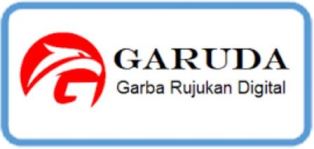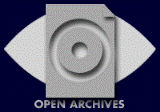Pengembangan Aplikasi Prediksi Kemampuan Siswa pada Pembelajaran Berbasis Proyek dalam Perkuliahan Rekayasa Perangkat Lunak
 ),
), (1) Universitas Negeri Padang
 Corresponding Author
Corresponding Author
DOI : https://doi.org/10.24036/voteteknika.v12i1.127511
Full Text:
 Language : id
Language : id
Abstract
ABSTRAK
Artikel ini menyajikan sebuah studi kasus tentang implementasi Pembelajaran Berbasis Proyek (PBL) dalam konteks pendidikan Rekayasa Perangkat Lunak, dengan fokus pada pengembangan aplikasi untuk memprediksi kemampuan siswa menggunakan metode Naive Bayes. Proyek ini mengikuti metodologi Waterfall untuk proses pengembangannya. Evaluasi aplikasi menunjukkan keberhasilannya dalam memprediksi kemampuan siswa dengan akurasi tinggi, mencapai 100% presisi dan review untuk kelas yang dikategorikan sebagai 'prediksi sangat baik' dan 'butuh bimbingan', serta 80% untuk kelas 'baik' dalam prediksi. Pengujian kedua metodologi PBL dan Waterfall menghasilkan hasil positif, dengan pengujian Waterfall mencapai antara 95% hingga 100% dalam verifikasi kebutuhan, kesesuaian desain sistem, pengujian unit, dan integrasi komponen sistem. PBL juga terbukti berhasil dalam meningkatkan pemahaman konsep Rekayasa Perangkat Lunak, keterampilan praktis, dan memfasilitasi pendekatan pembelajaran aktif. Sebagai kesimpulan, aplikasi yang dikembangkan menawarkan solusi yang efektif dan efisien untuk memprediksi kemampuan siswa, dengan dampak signifikan dalam meningkatkan kualitas pembelajaran dan penilaian dalam mata kuliah Rekayasa Perangkat Lunak.
Kata kunci : pengembangan aplikasi, prediksi kemampuan siswa, rekayasa perangkat lunak, pembelajaran berbasis proyek.
This article presents a case consider on the usage of Project-Based Learning (PBL) within the setting of Program Building instruction, centering on the advancement of an application for anticipating understudy capacities utilizing the Naive Bayes strategy. The extend takes after the Waterfall strategy for its improvement handle. The assessment of the application illustrates its victory in anticipating understudy capacities with tall precision, accomplishing 100% exactness and review for classes categorized as 'excellent prediction' and 'guidance needed', and 80% for 'good' expectation classes. Testing both PBL and Waterfall techniques yielded positive comes about, with Waterfall testing accomplishing between 95% to 100% in prerequisites confirmation, framework plan compliance, unit testing, and framework component integration. PBL too demonstrated fruitful in improving understanding of Computer program Designing concepts, commonsense aptitudes, and cultivating an dynamic learning approach. In conclusion, the created application offers an viable and productive arrangement for anticipating understudy capacities, altogether affecting the quality of learning and evaluation in Program Designing courses.
Keywords: application development, student ability prediction, software engineering, project-based learning.
References
I. Žalėnienė and P. Pereira, “Higher Education For Sustainability: A Global Perspective,” Geogr. Sustain., vol. 2, no. 2, pp. 99–106, 2021, doi: https://doi.org/10.1016/j.geosus.2021.05.001.
L. Shebanie McCallen and H. Johnson, “The Role of Institutional Agents in Promoting Higher Education Success Among First-Generation College Students at a Public Urban University,” J. Divers. High. Educ., vol. 13, Sep. 2019, doi: 10.1037/dhe0000143.
J. Abbas, “Service quality in higher education institutions: qualitative evidence from the students’ perspectives using Maslow hierarchy of needs,” Int. J. Qual. Serv. Sci., vol. 12, no. 3, pp. 371–384, Jan. 2020, doi: 10.1108/IJQSS-02-2020-0016.
S. Kraus, P. Jones, N. Kailer, A. Weinmann, N. Chaparro-Banegas, and N. Roig-Tierno, “Digital Transformation: An Overview of the Current State of the Art of Research,” SAGE Open, vol. 11, no. 3, p. 21582440211047576, Jul. 2021, doi: 10.1177/21582440211047576.
F. Brunetti, D. T. Matt, A. Bonfanti, A. De Longhi, G. Pedrini, and G. Orzes, “Digital transformation challenges: strategies emerging from a multi-stakeholder approach,” TQM J., vol. 32, no. 4, pp. 697–724, Jan. 2020, doi: 10.1108/TQM-12-2019-0309.
B. Melović, M. Jocović, M. Dabić, T. B. Vulić, and B. Dudic, “The impact of digital transformation and digital marketing on the brand promotion, positioning and electronic business in Montenegro,” Technol. Soc., vol. 63, p. 101425, 2020, doi: https://doi.org/10.1016/j.techsoc.2020.101425.
H. J. Yazici, “Project-Based Learning for Teaching Business Analytics in the Undergraduate Curriculum*,” Decis. Sci. J. Innov. Educ., vol. 18, no. 4, pp. 589–611, Oct. 2020, doi: https://doi.org/10.1111/dsji.12219.
J. Gore, L. Fray, A. Miller, J. Harris, and W. Taggart, The impact of COVID-19 on student learning in New South Wales primary schools: an empirical study, vol. 48, no. 4. 2021. doi: 10.1007/s13384-021-00436-w.
Purwadi et al., “Student Perceptions of Online Learning during the COVID-19 Pandemic in Indonesia: A Study of Phenomenology,” Eur. J. Educ. Res., vol. 9, no. 3, pp. 1257–1265, 2020.
C. Wolters and A. Brady, “College Students’ Time Management: a Self-Regulated Learning Perspective,” Educ. Psychol. Rev., vol. 33, pp. 1–33, Dec. 2021, doi: 10.1007/s10648-020-09519-z.
F. Ouyang, L. Zheng, and P. Jiao, “Artificial intelligence in online higher education: A systematic review of empirical research from 2011 to 2020,” Educ. Inf. Technol., vol. 27, no. 6, pp. 7893–7925, 2022, doi: 10.1007/s10639-022-10925-9.
J. Niyogisubizo, L. Liao, E. Nziyumva, E. Murwanashyaka, and P. C. Nshimyumukiza, “Predicting student’s dropout in university classes using two-layer ensemble machine learning approach: A novel stacked generalization,” Comput. Educ. Artif. Intell., vol. 3, p. 100066, 2022, doi: https://doi.org/10.1016/j.caeai.2022.100066.
S. Kudsi and I. G. L. P. Eka, “Rancang Bangun Media Pembelajaran Teknik Pengolahan Audio Video Berbasis Website dengan Model PJBL,” vol. 08, no. 2, pp. 52–60, 2023.
S. Latif, F. XianWen, and L. L. Wang, “Intelligent decision support system approach for predicting the performance of students based on three-level machine learning technique,” J. Intell. Syst., vol. 30, no. 1, pp. 739–749, 2021, doi: 10.1515/jisys-2020-0065.
N. R. Beckham, L. J. Akeh, G. N. P. Mitaart, and J. V Moniaga, “Determining factors that affect student performance using various machine learning methods,” Procedia Comput. Sci., vol. 216, pp. 597–603, 2023, doi: https://doi.org/10.1016/j.procs.2022.12.174.
Y. Cui, F. Chen, A. Shiri, and Y. Fan, “Predictive analytic models of student success in higher education,” Inf. Learn. Sci., vol. 120, no. 3/4, pp. 208–227, Jan. 2019, doi: 10.1108/ILS-10-2018-0104.
L. C. V. Simamora, “Analisis Faktor-Faktor Yang Mempengaruhi Minat Siswa dalam Memilih Studu Matematika di perguruan tinggo,” Duniailmu.org, vol. 3, no. 1, pp. 1–13, 2023.
Z. M. Ali, N. H. Hassoon, W. S. Ahmed, and H. N. Abed, “The Application of Data Mining for Predicting Academic Performance Using K-means Clustering and Naïve Bayes Classification,” Int. J. Psychosoc. Rehabil., vol. 24, no. 03, pp. 2143–2151, 2020, doi: 10.37200/ijpr/v24i3/pr200962.
J. G. Perez and E. S. Perez, “Predicting Student Program Completion Using Naïve Bayes Classification Algorithm,” Int. J. Mod. Educ. Comput. Sci., vol. 13, no. 3, pp. 57–67, 2021, doi: 10.5815/IJMECS.2021.03.05.
A. T. Ni’mah and F. Syuhada, “Term Weighting Based Indexing Class and Indexing Short Document for Indonesian Thesis Title Classification,” J. Comput. Sci. Informatics Eng., vol. 6, no. 2, pp. 167–175, 2022, doi: 10.29303/jcosine.v6i2.471.
F. Cantoni, E. Favari, and F. Pagnone, “Large engineering projects . Favouring resilience in increasingly complex environments grafting an adaptive approach to waterfall technique,” Electron. J. Manag., pp. 1–16, 2019, doi: 10.15167/1824-3576/IPEJM2019.2.1215.
N. Hidayati and S. Sismadi, “Application of Waterfall Model In Development of Work Training Acceptance System,” INTENSIF J. Ilm. Penelit. dan Penerapan Teknol. Sist. Inf., vol. 4, no. 1, pp. 75–89, 2020, doi: 10.29407/intensif.v4i1.13575.
 Article Metrics
Article Metrics
 Abstract Views : 290 times
Abstract Views : 290 times
 PDF (Bahasa Indonesia) Downloaded : 121 times
PDF (Bahasa Indonesia) Downloaded : 121 times
Refbacks
- There are currently no refbacks.

This work is licensed under a Creative Commons Attribution-ShareAlike 4.0 International License.



.png)


.jpg)




